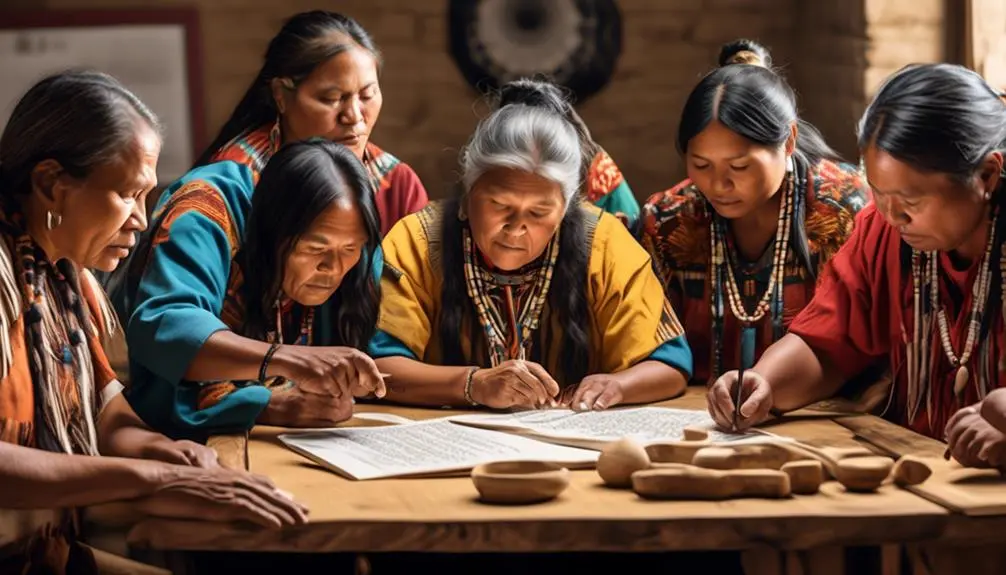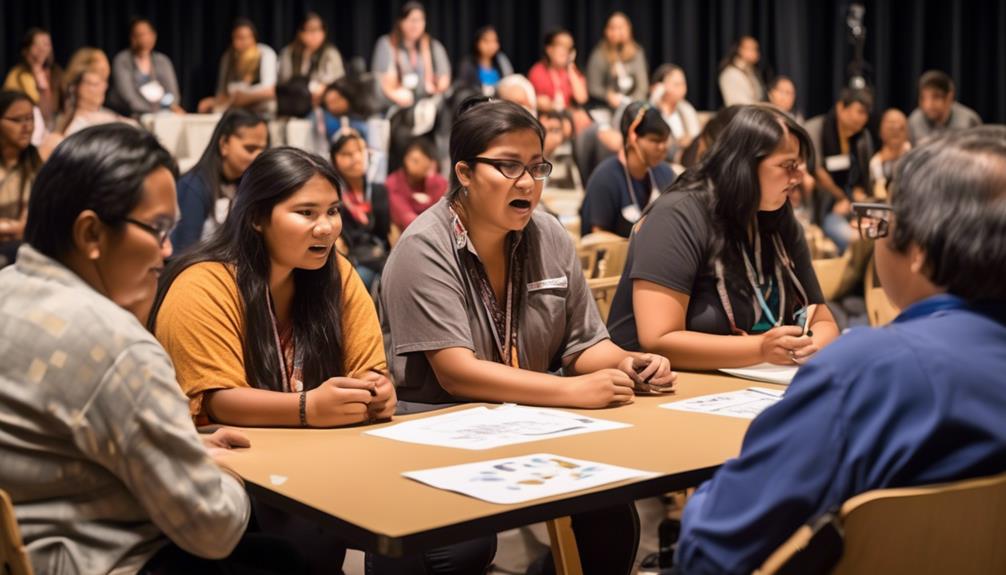
Voices from the Airwaves: How Indigenous Community Broadcasting is Rescuing Endangered Languages and Rekindling Cultural Identity
In an era dominated by globalized media and the digital cacophony, a quieter, more profound revolution is taking place on the airwaves and screens of Indigenous communities worldwide. Far from the bustling studios of corporate giants, community-run broadcasting initiatives are emerging as vital lifelines for endangered languages and the rich cultural tapestries they embody. These stations, often operating on shoestring budgets in remote locales, are not just transmitting signals; they are transmitting heritage, preserving identity, and empowering the next generation to speak, sing, and dream in their ancestral tongues.
The scale of the challenge is immense. According to UNESCO, nearly half of the world’s approximately 7,000 languages are endangered, with an Indigenous language disappearing on average every two weeks. This linguistic erosion is not merely a loss of vocabulary; it represents the unraveling of entire knowledge systems, oral histories, traditional practices, and unique worldviews. For Indigenous peoples, language is inextricably linked to land, identity, and self-determination. When a language dies, a distinct way of understanding and interacting with the world perishes with it.
It is against this backdrop of urgency that Indigenous community broadcasting has risen to prominence, proving to be an exceptionally effective, accessible, and culturally appropriate tool for language revitalization. Unlike mainstream media, which often marginalizes or misrepresents Indigenous voices, community broadcasters are owned, operated, and programmed by the communities they serve. This fundamental principle of self-determination ensures that content is culturally relevant, locally resonant, and directly addresses the needs and aspirations of the people.
The Power of the Spoken Word, Amplified
At its core, community broadcasting offers a unique platform for the consistent and widespread use of Indigenous languages. For many communities, particularly those where the number of fluent speakers is dwindling, the radio or television becomes a crucial "language nest" – a place where the language is heard, spoken, and celebrated daily. This exposure is vital for both fluent elders, who find a new purpose in sharing their knowledge, and for younger generations, who may have limited opportunities to hear their language spoken outside the home.

Programs range from daily news bulletins delivered in multiple Indigenous languages, weather reports, and traditional storytelling, to language lessons, music shows featuring local artists, and discussions on cultural practices. This immersive environment normalizes the language, making it a living, breathing part of contemporary life rather than a relic of the past. As Dr. Tui Adams, a Māori language expert, once noted, "Language is like a river. If it stops flowing, it becomes stagnant. Broadcasting helps keep our language flowing."
One of the earliest and most impactful examples of this phenomenon can be found in Australia with the Central Australian Aboriginal Media Association (CAAMA). Established in 1980, CAAMA began as a modest radio station broadcasting in several Aboriginal languages from Alice Springs. It quickly grew into a powerful media organization, producing radio, television, and music content that celebrates Aboriginal culture and provides critical information. CAAMA’s radio services reach remote communities across the vast desert, delivering news, health messages, and entertainment in languages like Pitjantjatjara, Warlpiri, and Arrernte. This consistent presence has been instrumental in strengthening language use and cultural pride for decades.
Similarly, in the remote Kimberley region of Western Australia, Waringarri Radio 6WR broadcasts in Miriwoong, Kija, and other local languages. The station is a hub for cultural transmission, featuring elders sharing dreamtime stories, teaching language phrases, and providing a platform for local musicians. For children growing up in these areas, hearing their language on the radio validates its importance and encourages them to learn.
Beyond Words: Cultural Transmission and Identity
The role of Indigenous community broadcasting extends beyond mere linguistic instruction. It is a powerful vehicle for cultural transmission, reinforcing traditional knowledge, values, and practices that are often intertwined with language. Storytelling, a cornerstone of many Indigenous cultures, finds a natural home on the airwaves. Elders can share ancient narratives, historical accounts, and life lessons, ensuring these invaluable oral traditions are not lost. Music, too, plays a critical role, with stations showcasing traditional songs and contemporary music in Indigenous languages, fostering a sense of pride and continuity.
In Canada, the Aboriginal Peoples Television Network (APTN), launched in 1999, stands as the world’s first national Indigenous broadcaster. APTN broadcasts in English, French, and a diverse array of Indigenous languages, including Cree, Ojibway, Inuktitut, and Mohawk. Its programming spans news, documentaries, children’s shows, and dramas, all from an Indigenous perspective. APTN not only preserves languages but also combats stereotypes and offers positive role models, strengthening Indigenous identity for audiences across the vast Canadian landscape. Local community radio stations in remote First Nations, Inuit, and Métis communities further complement this effort, providing hyper-local content in specific dialects.
The impact on intergenerational transmission is particularly profound. Broadcasting provides a bridge between elders, who are often the last fluent speakers, and youth, who are growing up in a world dominated by English or other colonial languages. By making language learning engaging and accessible, often through youth-focused programming, community stations inspire younger generations to reconnect with their heritage. For many Indigenous youth, hearing their language on the radio or seeing it on TV makes it "cool" and relevant, fostering a sense of pride rather than embarrassment.
Challenges and the Path Forward
Despite their immense contributions, Indigenous community broadcasters face significant challenges. Funding is a perpetual struggle, with many stations relying on grants, volunteer efforts, and limited local advertising. This financial precarity impacts their ability to invest in modern equipment, professional training, and competitive salaries, leading to high turnover and technical limitations. Access to reliable technology, especially in remote areas, can also be an issue, though the rise of digital platforms and satellite technology is helping to bridge some gaps.

Furthermore, the sheer diversity of Indigenous languages within a single region can pose programming challenges. A station might serve multiple language groups, requiring careful scheduling and resource allocation to ensure all voices are heard. The need for skilled Indigenous media professionals – broadcasters, technicians, producers, and journalists – is also critical and requires ongoing investment in training and mentorship programs.
However, the future is also ripe with opportunity. The digital age offers new avenues for language preservation. Podcasts, online streaming, and social media platforms allow Indigenous broadcasters to reach wider audiences, engage diasporic communities, and create interactive language learning resources. For instance, the Māori language revitalization movement in New Zealand has successfully leveraged a network of 21 iwi (tribal) radio stations, Te Reo Irirangi o Aotearoa, which broadcast predominantly in Te Reo Māori. This coordinated effort, coupled with government support and community initiatives, has seen a remarkable resurgence in the language. Online platforms and apps now further extend their reach, making language learning accessible anywhere, anytime.
A Beacon of Resilience
Indigenous community broadcasting is more than just a media service; it is a profound act of cultural resilience and self-determination. It challenges the historical legacy of assimilation by asserting Indigenous voices, knowledge, and languages on their own terms. By providing platforms for intergenerational dialogue, cultural celebration, and everyday communication in ancestral languages, these broadcasters are not just preserving the past; they are actively building a vibrant future.
In a world increasingly aware of the value of diversity and the fragility of cultural heritage, the efforts of these community stations stand as a powerful testament to the enduring spirit of Indigenous peoples. They remind us that true strength lies in the multitude of voices, and that by amplifying the languages that define us, we enrich not only individual communities but the collective human experience itself. The airwaves, once silent or filled with foreign tongues, are now alive with the echoes of ancient stories and the vibrant promise of languages revitalized.